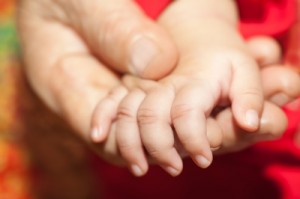Potty training is the transition from using nappies (diapers) to using a potty and later on the toilet. Potty training can be an arduous task for many parents, especially if it is attempted when the child is very young. The speed of the transition from nappies to toilet usage can be fast for some children and slow for others. Parents should understand that every child is ready for potty training at a different age and be patient until that time comes.
Be patient until your child is ready to be potty trained. (Image: Nutdanai Apikhomboonwaroot / FreeDigitalPhotos.net)
Potty Training Hygiene
Every child should be encouraged to take initiative when it comes to potty training. Teaching the children to wipe the potty (and later on the toilet seat) by themselves will help them understand the importance of personal hygiene. The child must learn from early on what it can do by itself and when to ask for help from an adult in potty accidents.
Typically, children will learn toilet habits first by sitting on the potty and then move on to the toilet once they have become acquainted with toilet hygiene.
Hand washing is arguably the most important hygiene habit a child should learn from an early age. Hand washing reduces the germ count on our hands and should be done regularly. Children should learn to wash their hands after potty training so they carry that habit on to adulthood.
Potty Training and infants
Let’s put this simply. It is virtually impossible to potty train a child that is less than 12 months old. The main reasons that make infant potty training virtually impossible is the children’s inability to communicate their state in such young age.
Regardless, for various reasons some parents will attempt to minimize the use of nappies or avoid them altogether. This is not an easy task and can easily lead to stress and frustration.
Should you attempt infant potty training, you must be alert to any signs that might signal the child’s need to relieve itself.
Training Pants
Instead of aiming for a quick transition from nappies to regular underwear for their children, many parents opt to gradually reduce the use of nappies during the day and use training pants during bedtime.
Training pants come in many different styles and sizes. The typical training pant is a reusable pull-up pant made of washable cloth while the second most common type of training pant is a one-use training pant made of disposable materials.
Potty Training Preparations
As the time comes to get ready for potty training your child you will be faced with many different choices and considerations. A well-prepared parent is a smart parent and you don’t want to start potty training without the proper equipment at hand.
Unless the child is already sufficiently grown up to use the toilet straight away, obviously a potty is needed.
Training pants can be very helpful to ease the transition from nappies to regular underwear.
Also, other items such as a potty ring, a child-sized stepping stool to help the child reach the toilet and of course the child’s underwear for use after the potty training has been successfully concluded should be purchased in advance.
Finally, using Incentives and rewards such as toys, badges and stickers are a good idea to keep your child motivated and reward them for maintaining proper hygiene standards such as hand washing and successfully concluding their potty training days.

